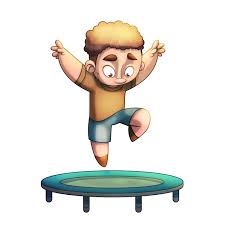
Written and illustrated in 1989 by Eileen Christelow of Washington D.C, Five Little Monkeys jumping on the bed was published and became one of the most popular nursery rhymes of our time. Christelow, at the time had a fourteen month old daughter and had an interest in photography. But there was one problem. There was always the daunting task of trying to find the perfect photo to tell the whole story which ignited the flame to write children’s books. More than just a book of rhymes, Five Little Monkeys Jumping On The Bed covers all bases of early education from ages 0-5.
Children Skillset & Rhyme Interaction
One of the many things that I picked up on while exploring this nursery Rhyme is that it’s more than just a simple rhythmic piece of literature. It has way more to offer to the young adolescence of today with English, counting, and proper speech usage. Starting with five monkeys and going to four, and then going to three etc., teaches a child to count backwards along with learning subtraction. Rhyming for kids can help bring the English language together. Not only vibrant and catchy, it strengthens memory and hits home with enunciation. Nursery Rhymes such as “Five Little Monkeys Jumping On The Bed” does wonders for kids with Speech impediments. A rather engaging tune mixed with learning accelerates the brain to pick up on words and numbers quicker as children are constant sponges in todays growing society.
Topic of Discussion for Kids
Eileen Christelow put together a very intriguing Rhyme that has stood the test of time for years to come. But I thought to myself, why is that? Is it because Christelow also inserted a cause and effect scenario within the rhyme? I agree. Studies show that children remember critical thinking quicker through melody. In this case Rhymes are subconsciously teaching kids what will happen if you decide to take certain risks, such as “jumping on the bed.” Injuring yourself may warrant a call to the Doctor. This process is prompting children on critical thinking as well. A melody that tells me I shouldn’t jump on the bed unless I want to visit the doctor. Concluding with the Doctor telling Mom, “No more monkeys jumping on the bed.” Another topic of discussion (from a kid) would be, “what is a doctor?” Now parents can educate their children about occupations and the roles that they play in everyday life.
Parent & Teacher lessons
Children love to interact and have fun. It’s simple for them so lets keep it simple. Parents can affectively teach their children at home by adding nurseries to chores or homework assignments. Teachers have the ability to build and progress motor skills. Skills that can turn our children into intelligent, self-respecting, and well mannered adults.